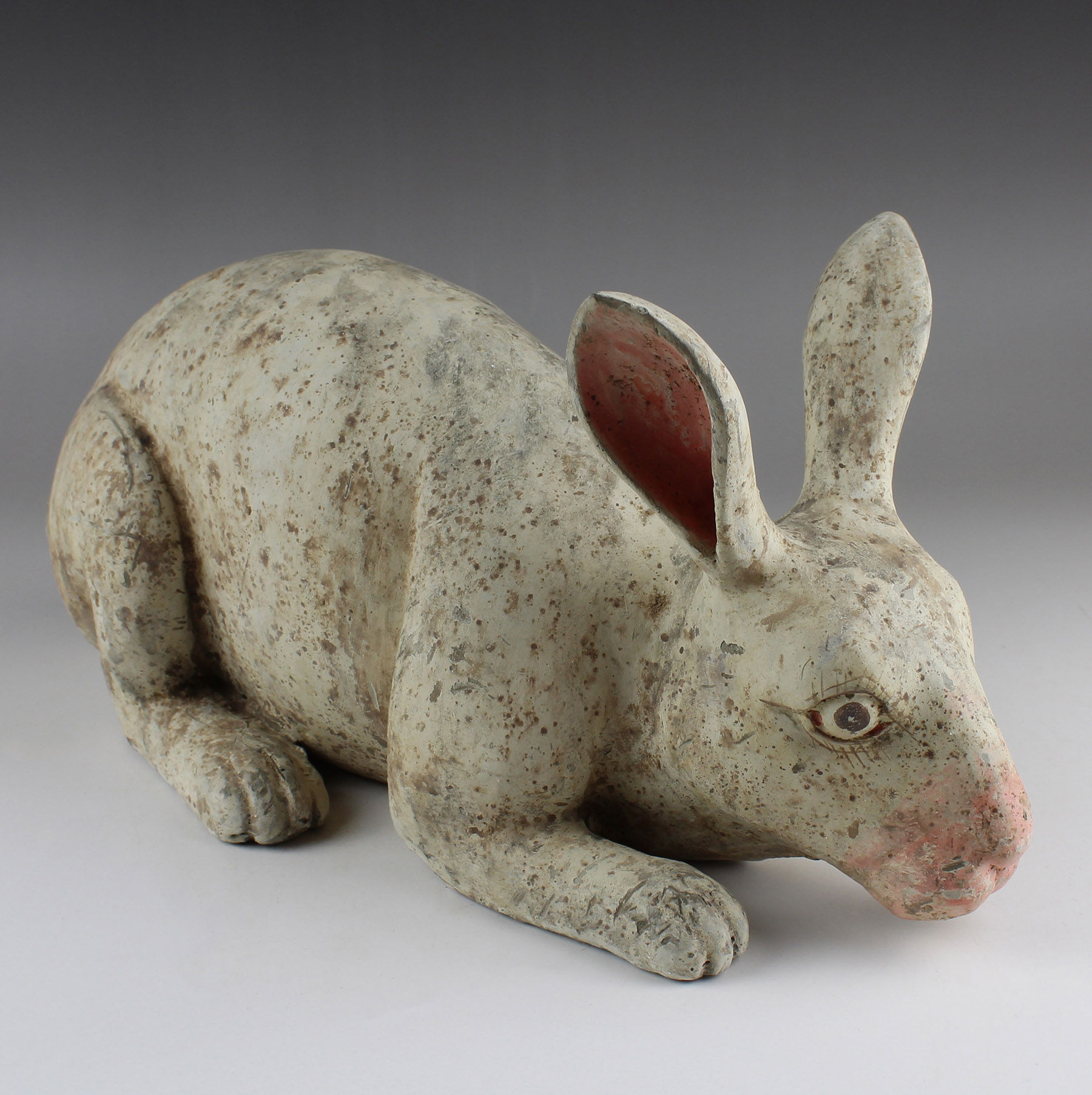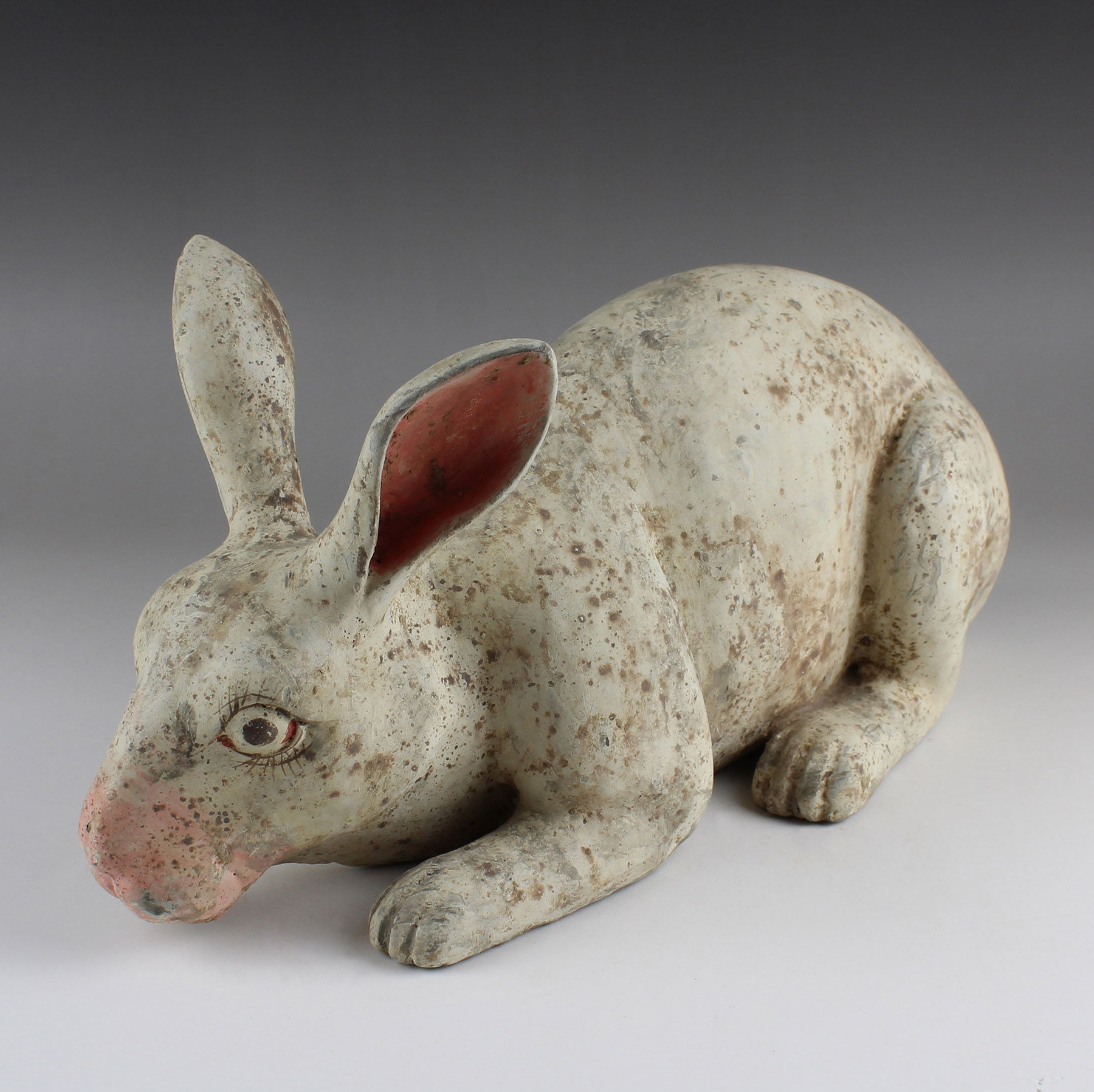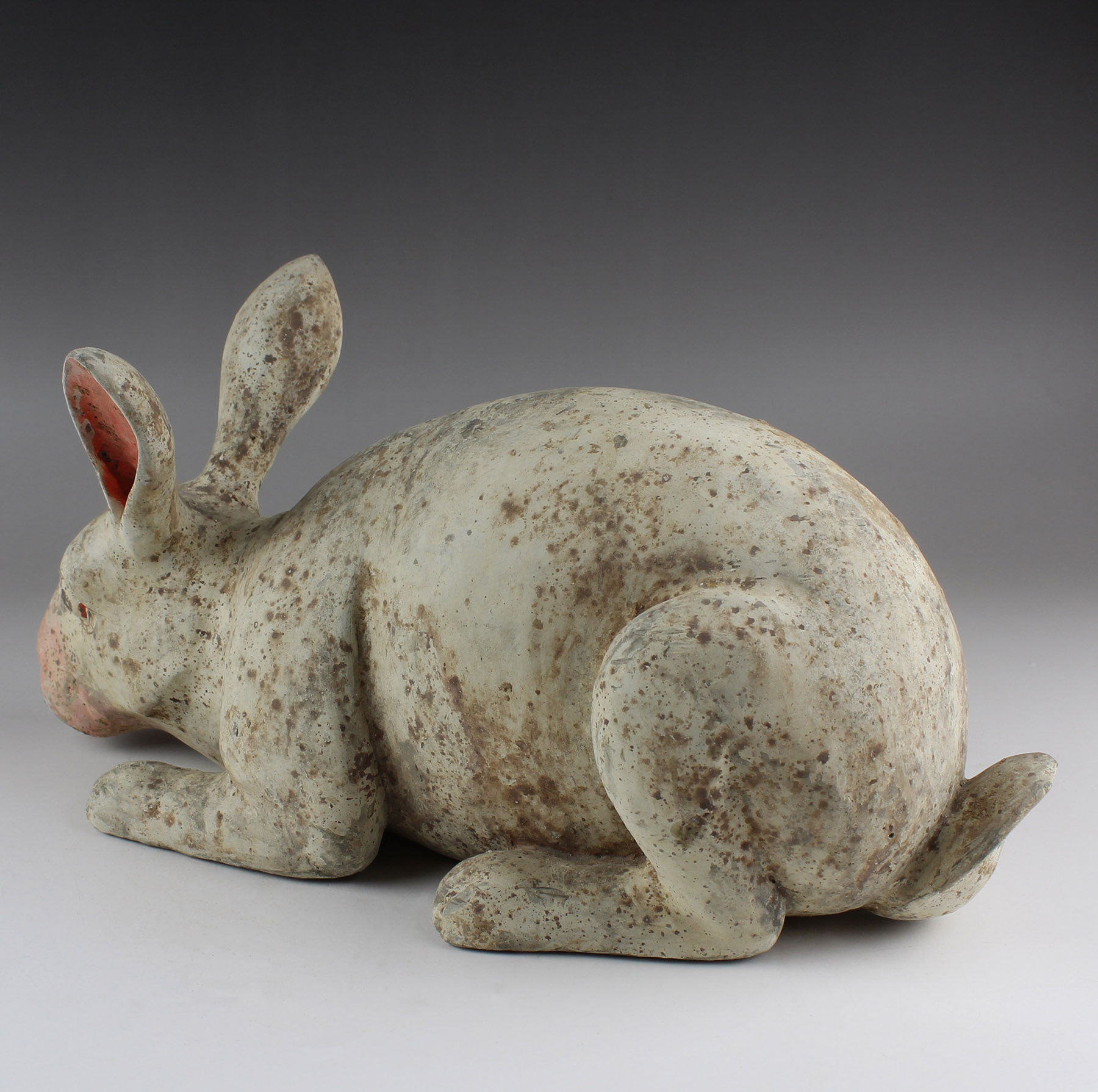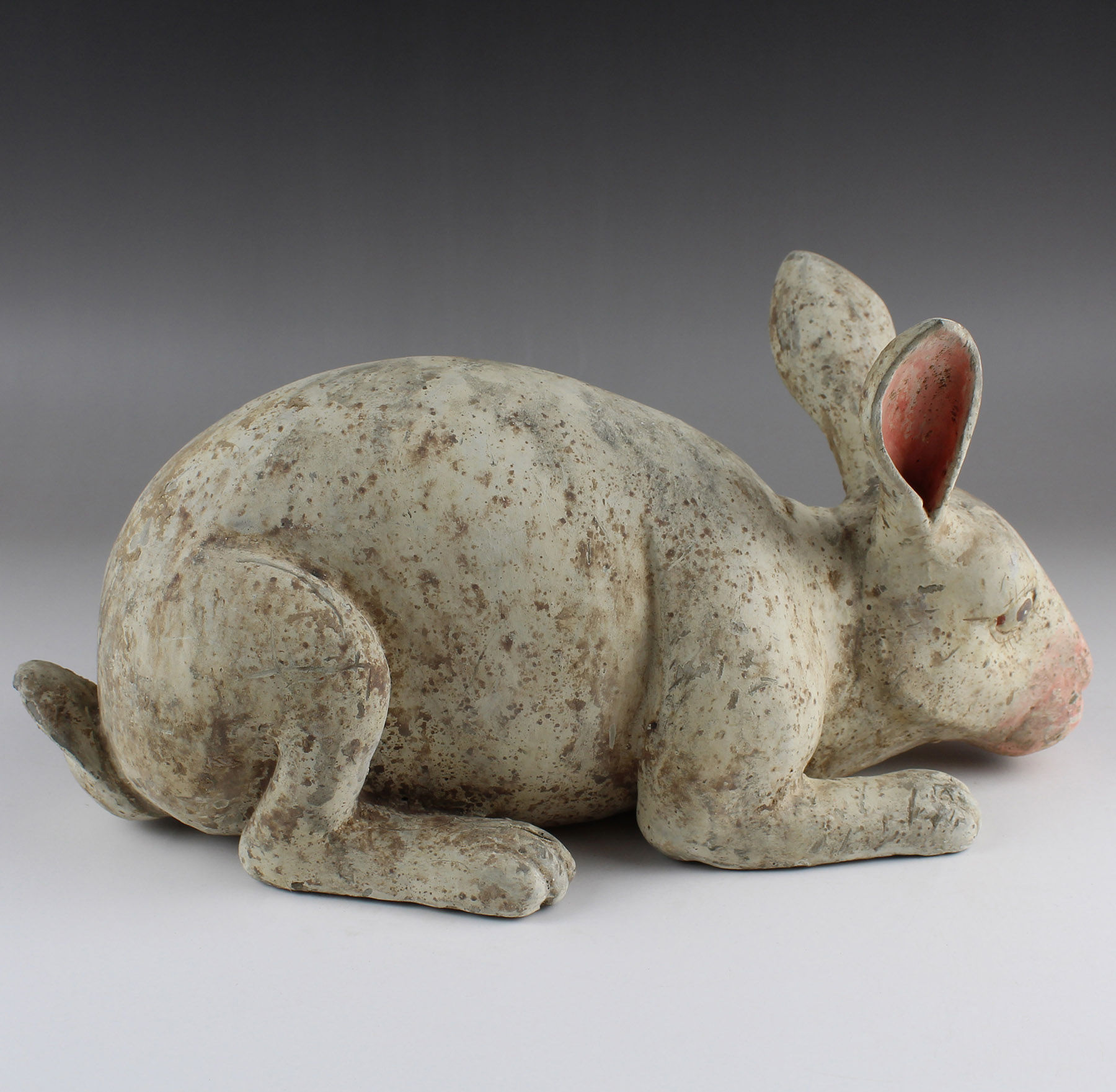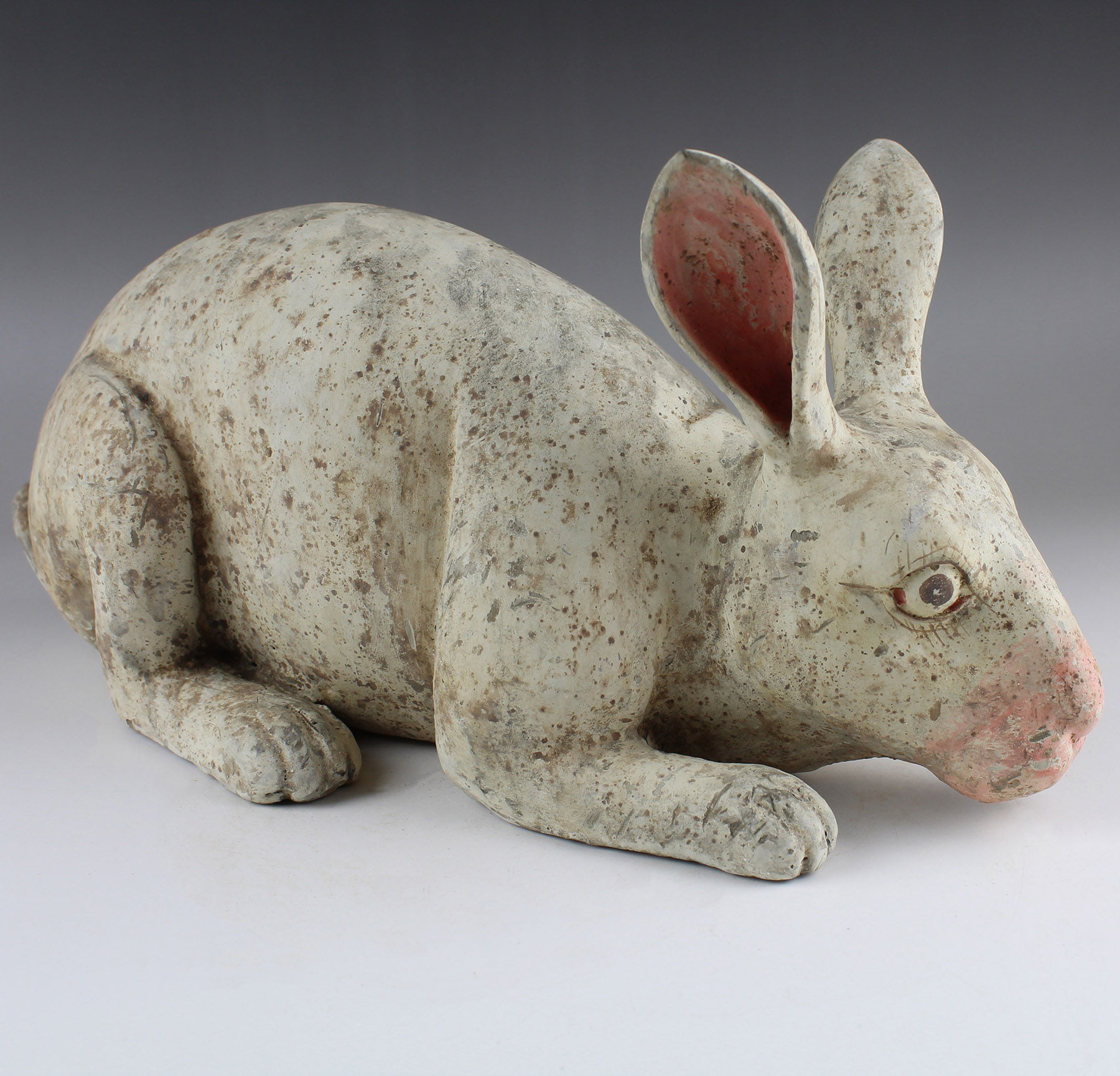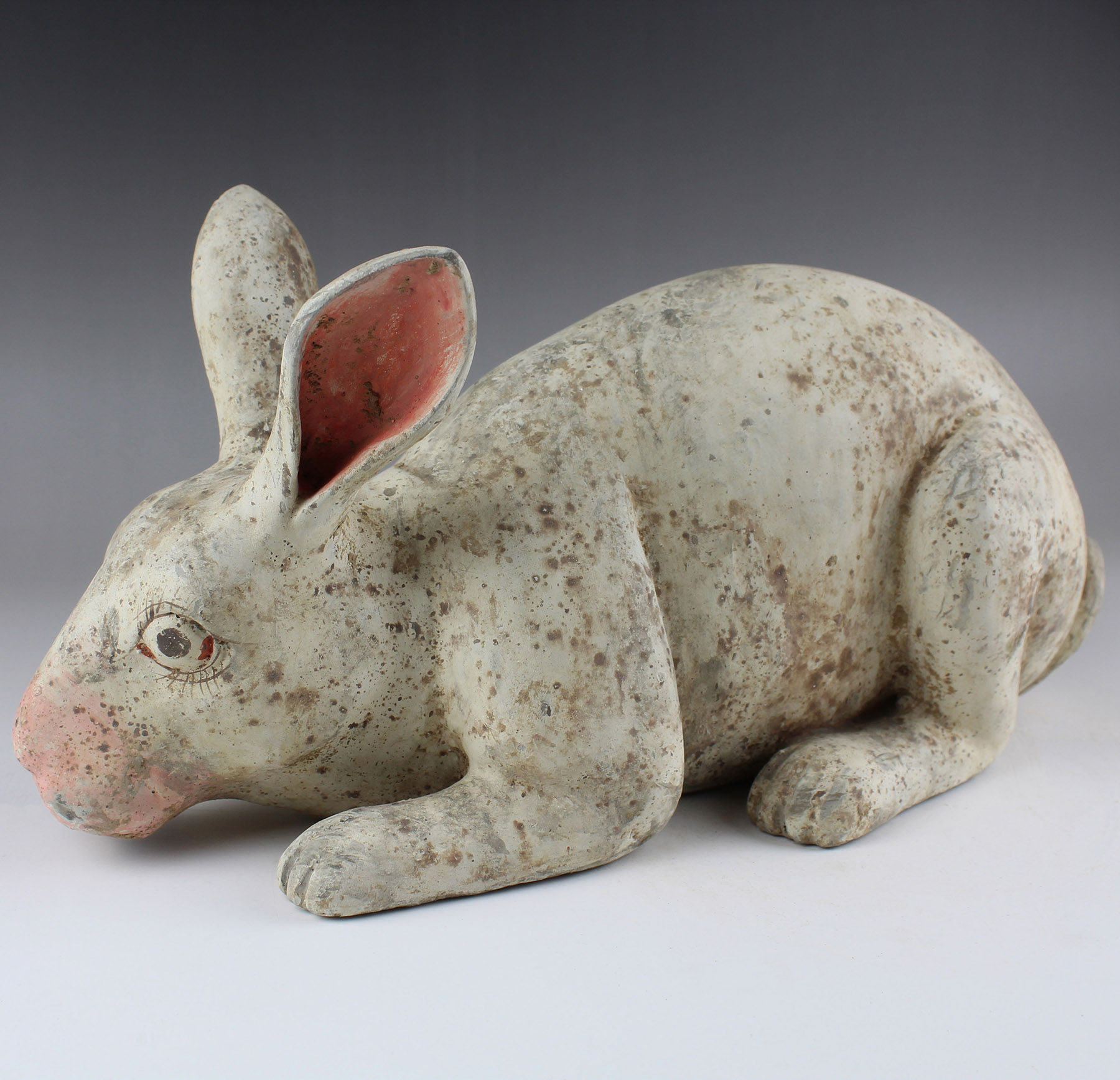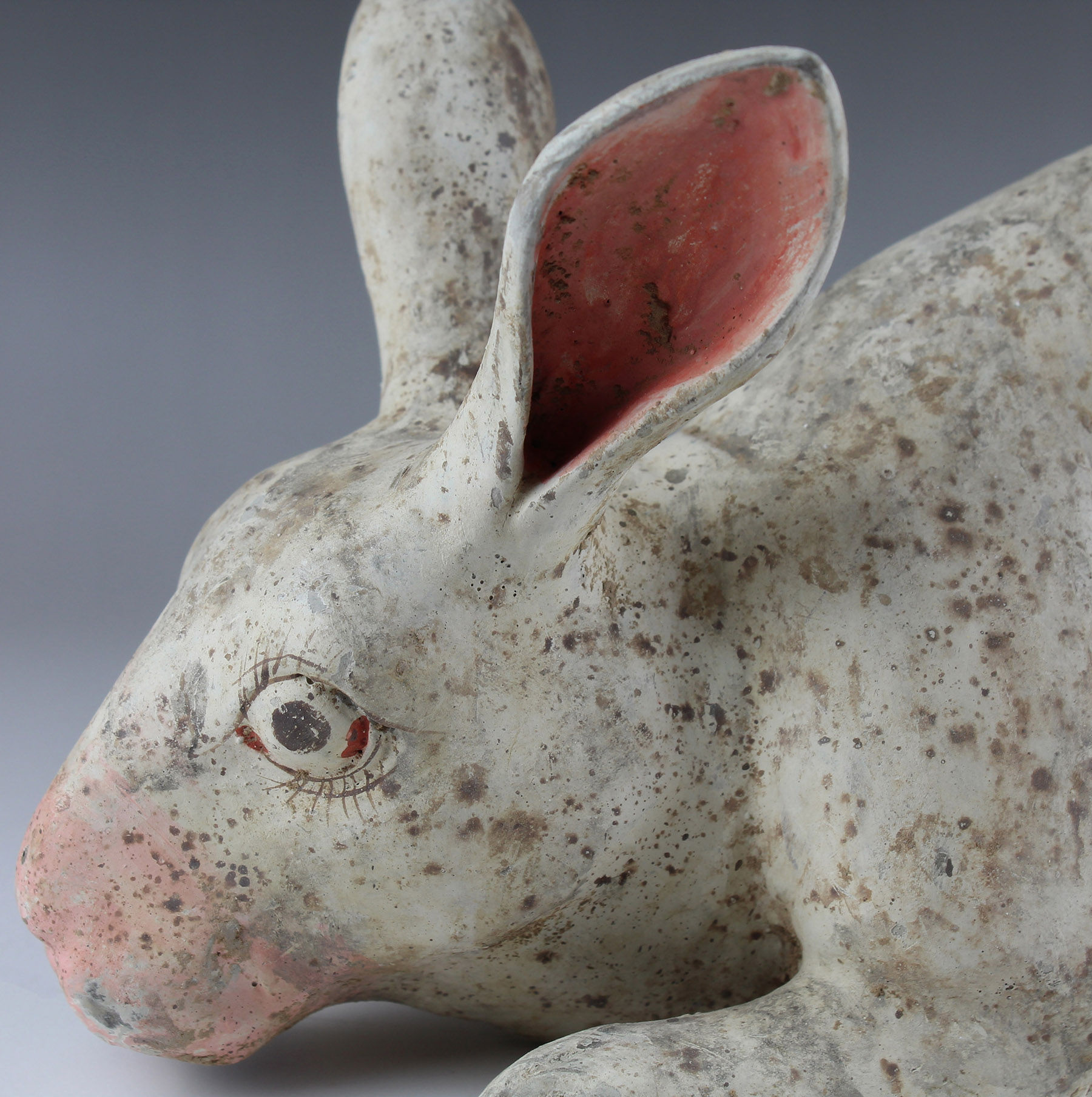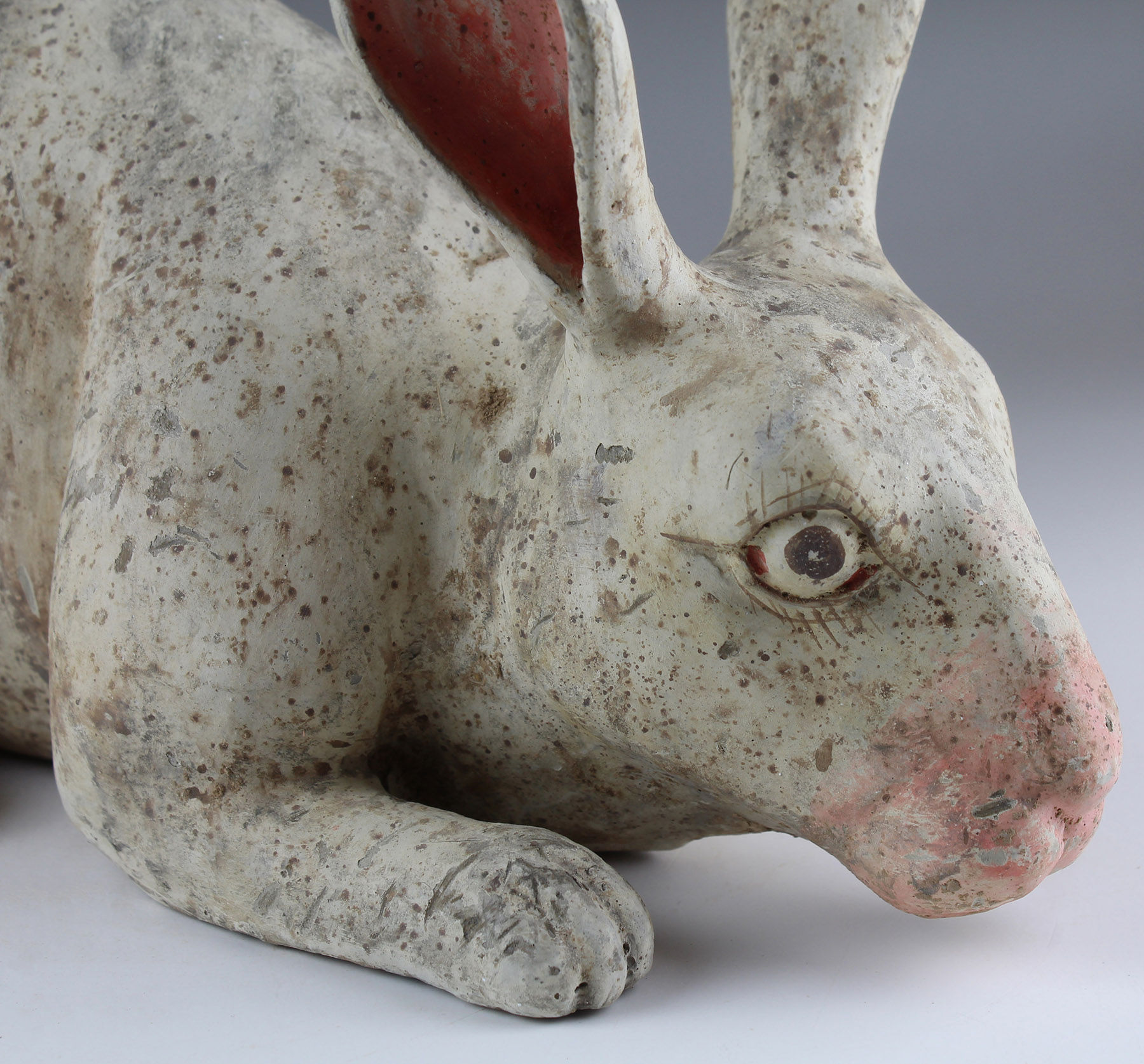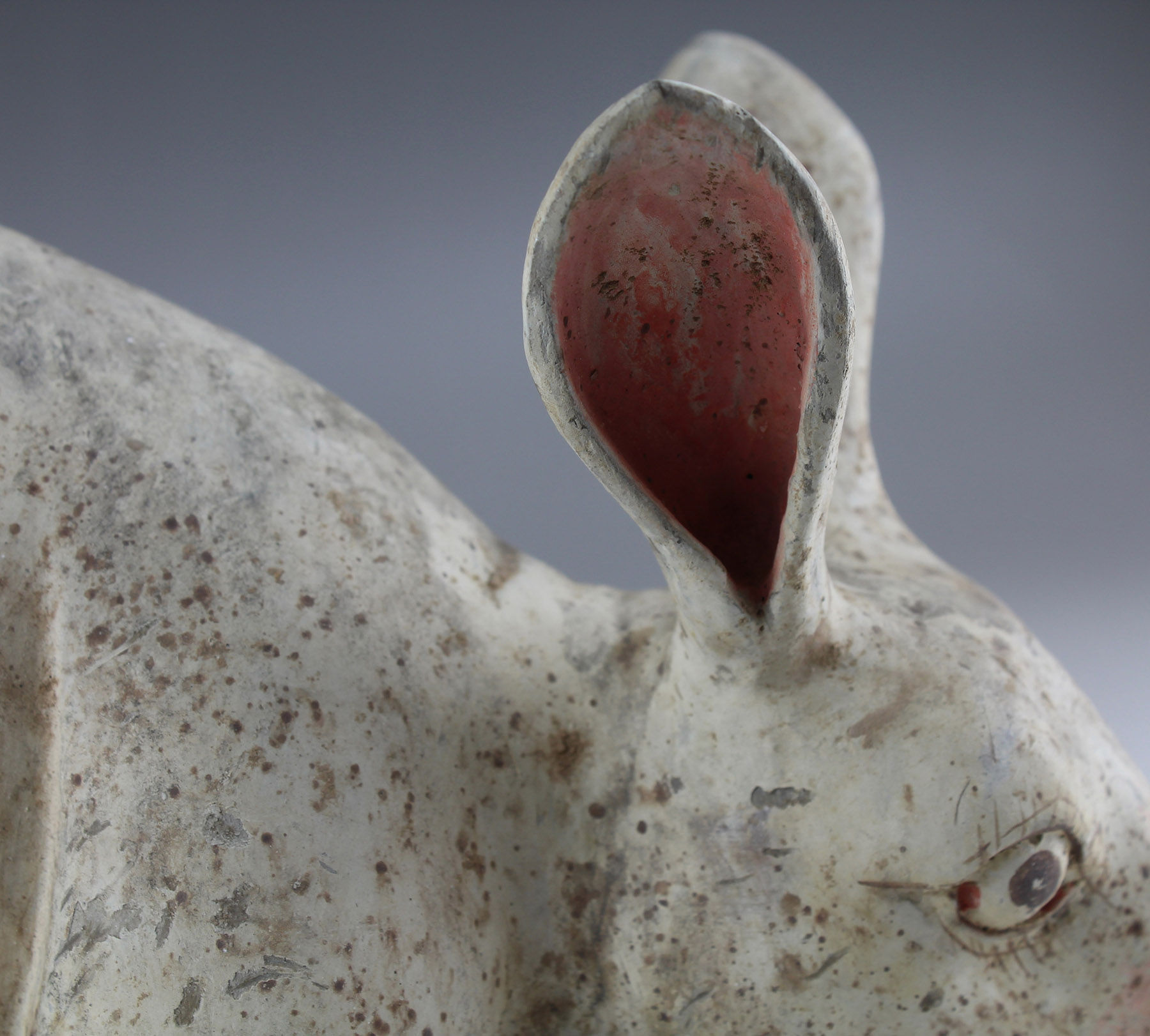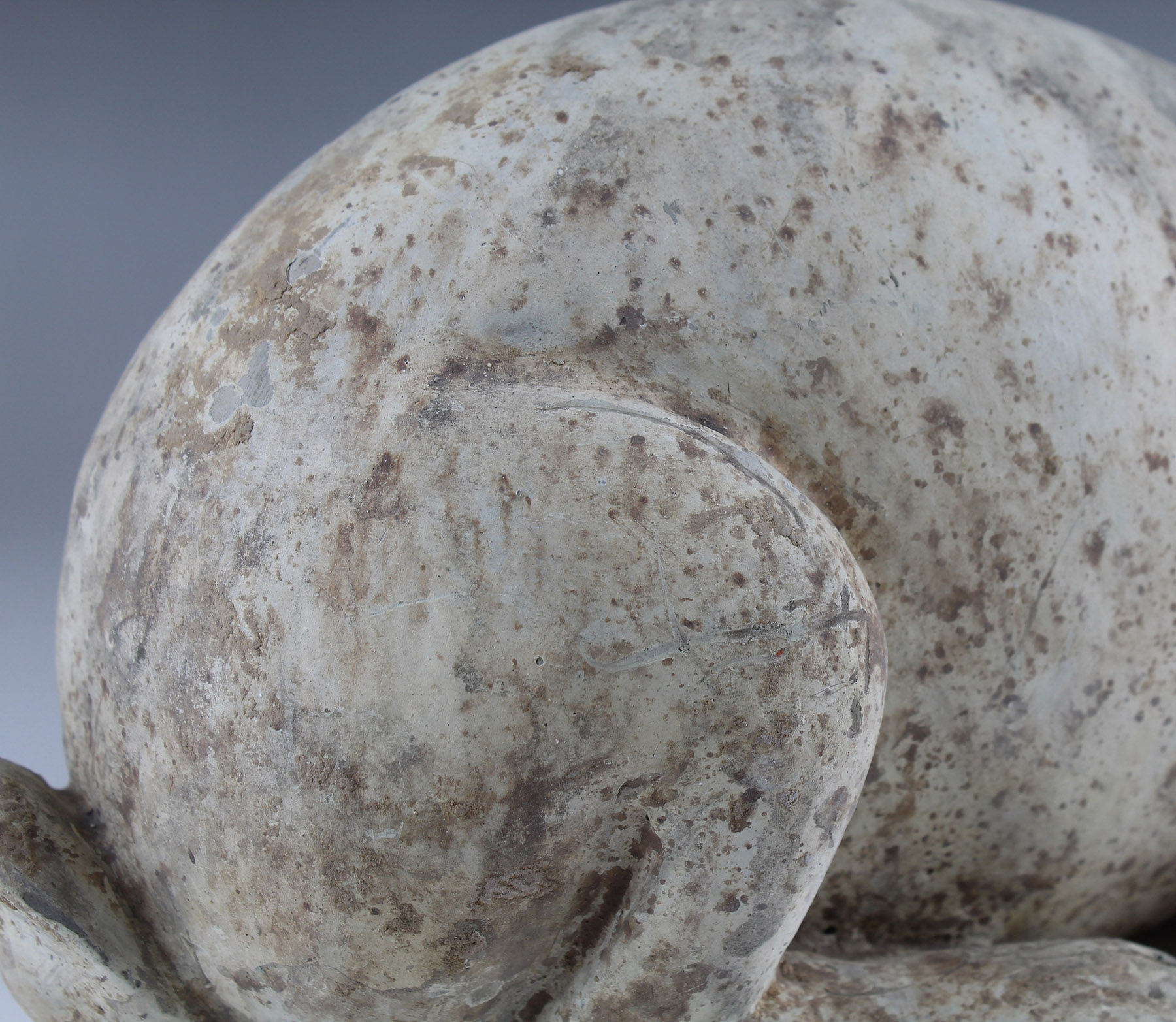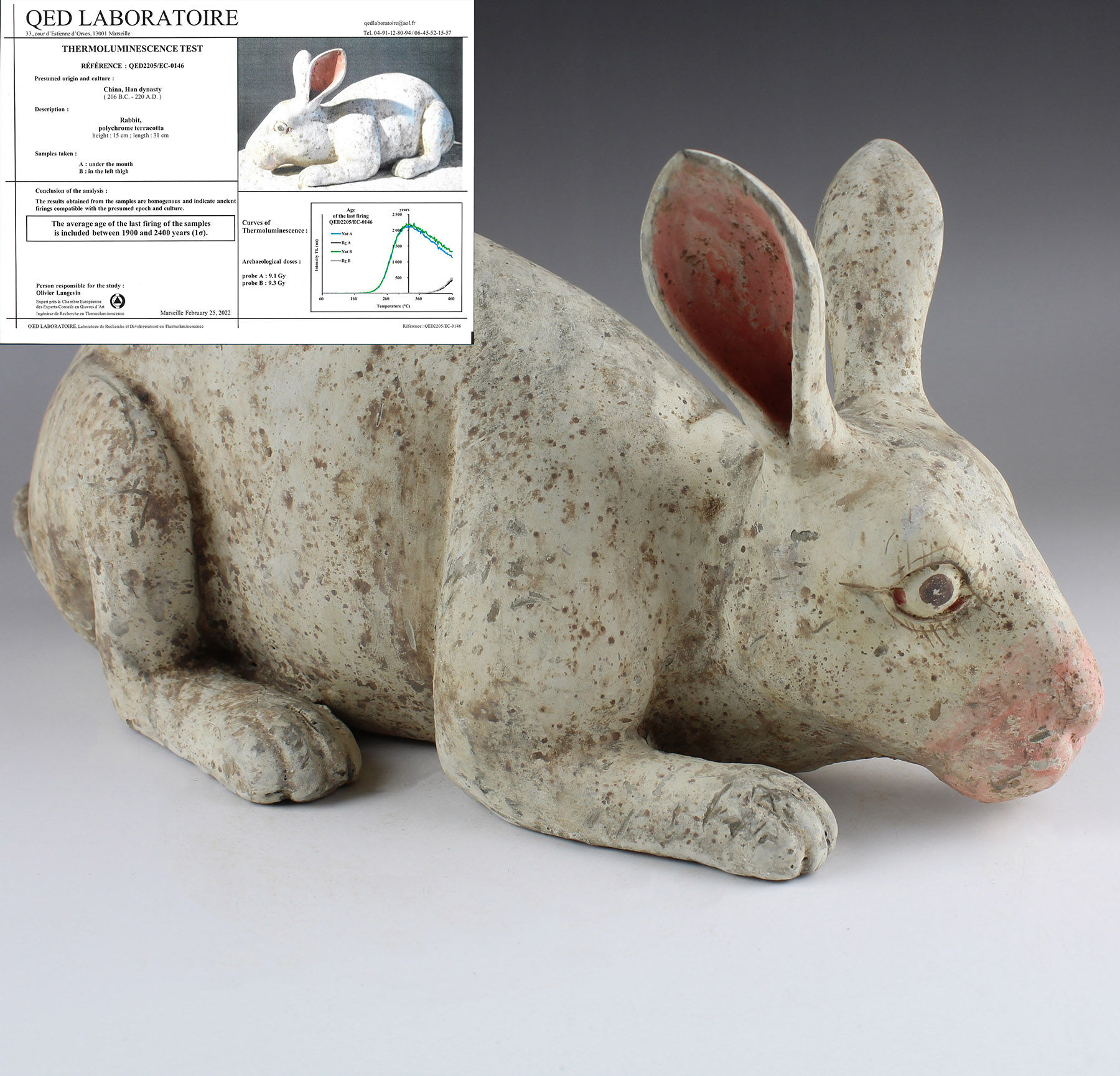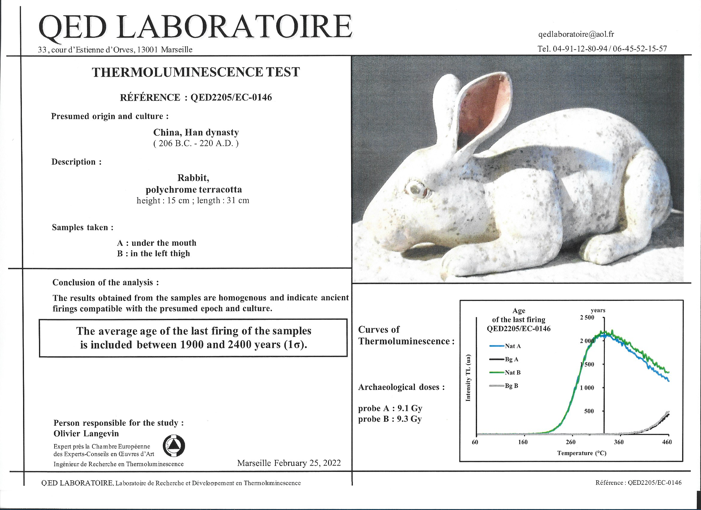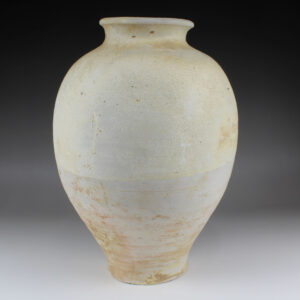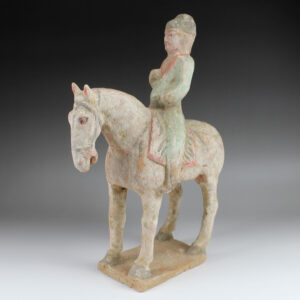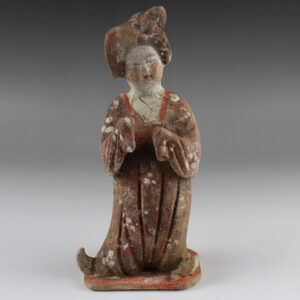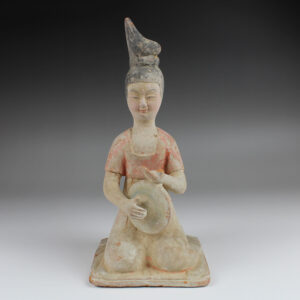Description
| ITEM | Statuette of a rabbit |
| MATERIAL | Pottery |
| CULTURE | Chinese, Han Dynasty |
| PERIOD | 206 B.C – 220 A.D |
| DIMENSIONS | 143 mm x 134 mm x 310 mm |
| CONDITION | Good condition. Includes Thermoluminescence test by QED Laboratoire (Reference QED2205/EC-0146) |
| PROVENANCE | Ex Hong Kong art dealer, acquired on the art market |
The Han dynasty was founded by Liu Bang (best known by his temple name, Gaozu), who assumed the title of emperor in 202 BCE. Eleven members of the Liu family followed in his place as effective emperors until 6 CE (a 12th briefly occupied the throne as a puppet). In 9 CE the dynastic line was challenged by Wang Mang, who established his own regime under the title of Xin. In 25 CE the authority of the Han dynasty was reaffirmed by Liu Xiu (posthumous name Guangwudi), who reigned as Han emperor until 57. Thirteen of his descendants maintained the dynastic succession until 220, when the rule of a single empire was replaced by that of three separate kingdoms. While the entire period from 206 (or 202) BCE to 220 CE is generally described as that of the Han dynasty, the terms Xi (Western) Han (also called Former Han) and Dong (Eastern) Han (also called Later Han) are used to denote the two subperiods. During the first period, from 206 BCE to 25 CE, the capital city was situated at Chang’an (modern Xi’an), in the west; in the second period, from 25 to 220 CE, it lay farther east at Luoyang.
The four centuries in question may be treated as a single historical period by virtue of dynastic continuity, for, apart from the short interval of 9–25, imperial authority was unquestionably vested in successive members of the same family. The period, however, was one of considerable changes in imperial, political, and social development. Organs of government were established, tried, modified, or replaced, and new social distinctions were brought into being. Chinese prestige among other peoples varied with the political stability and military strength of the Han house, and the extent of territory that was subject to the jurisdiction of Han officials varied with the success of Han arms. At the same time, the example of the palace, the activities of government, and the growing luxuries of city life gave rise to new standards of cultural and technological achievement.
China’s first imperial dynasty, that of Qin, had lasted barely 15 years before its dissolution in the face of rebellion and civil war. By contrast, Han formed the first long-lasting regime that could successfully claim to be the sole authority entitled to wield administrative power. The Han forms of government, however, were derived in the first instance from the Qin dynasty, and these in turn incorporated a number of features of the government that had been practiced by earlier kingdoms. The Han empire left as a heritage a practical example of imperial government and an ideal of dynastic authority to which its successors aspired. But the Han period has been credited with more success than is its due; it has been represented as a period of 400 years of effective dynastic rule, punctuated by a short period in which a pretender to power usurped authority, and it has been assumed that imperial unity and effective administration advanced steadily with each decade. In fact, there were only a few short periods marked by dynastic strength, stable government, and intensive administration. Several reigns were characterized by palace intrigue and corrupt influences at court, and on a number of occasions the future of the dynasty was seriously endangered by outbreaks of violence, seizure of political power, or a crisis in the imperial succession.
It is likely that the original purpose of the figure was that of a mingqi, terracotta figures designed to be included in a burial in order to accompany the deceased in the afterlife for protection, service and companionship.
They included daily utensils, musical instruments, weapons, armor, and intimate objects such as the deceased’s cap, can and bamboo mat. Mingqi also could include figurines, spiritual representations rather than real people, of soldiers, servants, musicians, polo riders, houses, and horses. Extensive use of mingqi during certain periods may either have been an attempt to preserve the image of ritual propriety by cutting costs, or it may have a new idea separating the realm of the dead from that of the living.
Though these were particularly popular during the Tang dynasty (618-906 AD), mingqi from a broad range of historical periods have been found, with this piece acting as a particularly early example of the practice.
汉朝由刘邦(以其庙号 “高祖 “最为著名)建立,他于公元前202年称帝。刘氏家族的11名成员在他的位置上成为有效的皇帝,直到公元6年(第12个成员曾作为傀儡短暂地占据过皇位)。公元9年,王莽对王朝血统提出了挑战,他建立了自己的政权,名为 “信”。公元25年,汉朝的权威被刘秀(谥号光武帝)重新确认,他作为汉朝皇帝一直统治到57年。他的13个后代一直维持着王朝的继承,直到220年,一个帝国的统治被三个独立王国的统治所取代。虽然从公元前206年(或202年)到公元220年的整个时期通常被描述为汉朝时期,但西(西)汉(又称前汉)和东(东)汉(又称后汉)这两个术语被用来表示两个次时期。在第一个时期,从公元前206年到公元前25年,首都位于西部的长安(今西安);在第二个时期,从公元前25年到公元前220年,首都位于更东边的洛阳。
根据王朝的连续性,这四个世纪可以被视为一个历史时期,因为除了9-25年的短暂间隔外,皇权无疑是由同一家族的历任成员掌握的。然而,这一时期在帝国、政治和社会发展方面发生了巨大变化。政府机构被建立、尝试、修改或取代,新的社会区别也随之产生。中国在其他民族中的威望随着汉家的政治稳定和军事力量的变化而变化,受汉家官员管辖的领土范围随着汉家武器的成功而变化。同时,宫廷的榜样、政府的活动和城市生活的日益繁华,催生了文化和技术成就的新标准。
中国的第一个皇朝,即秦朝,在面对叛乱和内战时,仅仅持续了15年就解体了。相比之下,汉朝形成了第一个长期存在的政权,可以成功地宣称自己是有权行使行政权力的唯一权威。然而,汉朝的政府形式首先来自于秦朝,而这些形式又包含了早期王国所实行的一些政府特征。汉帝国留下了一个帝国政府的实际范例和一个其继承者所向往的王朝权力的理想,作为遗产。但是,汉代的成功被认为比它应得的更多;它被表现为一个400年的有效王朝统治时期,中间有一个短暂的时期,在这个时期,权力的伪装者篡夺了权力,而且它被认为帝国的统一和有效管理每十年都在稳步推进。事实上,只有几个短暂的时期以王朝的力量、稳定的政府和密集的管理为标志。有几个朝代的特点是宫廷阴谋和腐败影响,在一些情况下,王朝的未来因暴力事件的爆发、政治权力的夺取或皇室继承的危机而受到严重威胁。
其最初的用途很可能是明器,是为了陪葬而设计的兵马俑,目的是为了陪伴死者来世的保护、服务和陪伴。
明器包括日常用具、乐器、武器、盔甲,以及死者的帽子、罐子、竹席等私密物品。明器还可以包括士兵、仆人、乐师、马球手、房屋和马匹的塑像、精神代表而非真人。明器在某些时期的广泛使用,可能是为了节约成本,维护礼制的形象,也可能是为了把死人和活人的境界分开的新思想。
唐代的明器虽然特别流行,但各个历史时期的明器都有发现,本件是特别早的例子。


